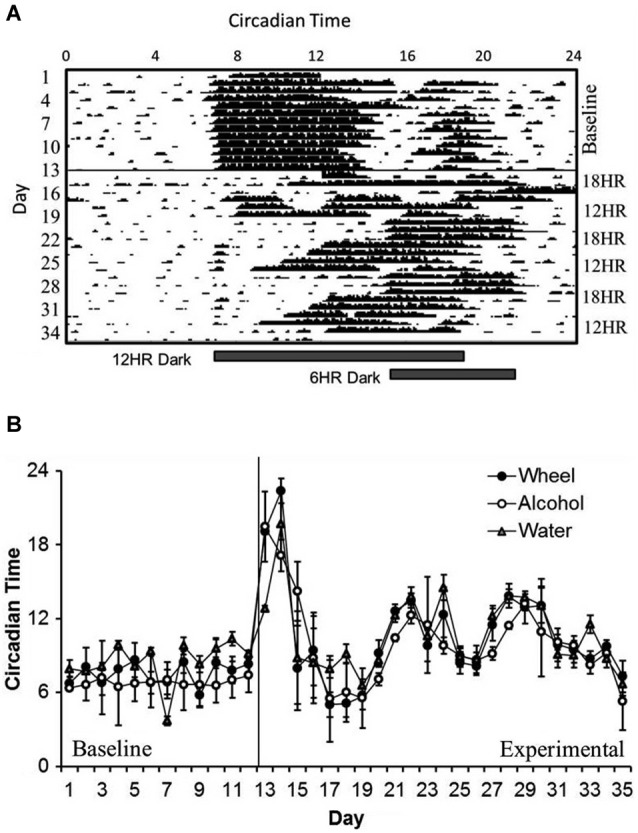Figure 1.

Circadian patterns and period onsets in C57BL/6J mice during baseline alcohol access and environmental circadian desynchrony (CD). (A) Representative actogram of wheel-running data from 1 mouse. Activity period remained stable throughout the baseline period, with activity onsets at approximately the same time that lights were turned off (7:00). During CD, mice were constantly shifting their behavior onsets to try to compensate for the phase advances and delays between the 12HR and 18HR photoperiods. (B) Over the course of the experiment, onset times for all three behaviors (wheel-running, alcohol intake, and water intake) remained synchronized, although these onsets varied dramatically during the experimental photoperiods (data indicate the mean ± standard error of the mean (SEM) for n = 8).
